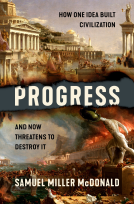
Why To Kill a Mockingbird Matters
What Harper Lee's Book and the Iconic American Film Mean to Us Today
by Tom Santopietro
This title was previously available on NetGalley and is now archived.
Send NetGalley books directly to your Kindle or Kindle app
1
To read on a Kindle or Kindle app, please add kindle@netgalley.com as an approved email address to receive files in your Amazon account. Click here for step-by-step instructions.
2
Also find your Kindle email address within your Amazon account, and enter it here.
Pub Date Jun 19 2018 | Archive Date Jun 19 2018
Talking about this book? Use #WhyToKillAMockingbirdMatters #NetGalley. More hashtag tips!
Description
Tom Santopietro, an author well-known for his writing about American popular culture, delves into the heart of the beloved classic and shows readers why To Kill a Mockingbird matters more today than ever before.
With 40 million copies sold, To Kill a Mockingbird’s poignant but clear eyed examination of human nature has cemented its status as a global classic. Tom Santopietro's new book, Why To Kill a Mockingbird Matters, takes a 360 degree look at the Mockingbird phenomenon both on page and screen.
Santopietro traces the writing of To Kill a Mockingbird, the impact of the Pulitzer Prize, and investigates the claims that Lee’s book is actually racist. Here for the first time is the full behind the scenes story regarding the creation of the 1962 film, one which entered the American consciousness in a way that few other films ever have. From the earliest casting sessions to the Oscars and the 50th Anniversary screening at the White House, Santopietro examines exactly what makes the movie and Gregory Peck’s unforgettable performance as Atticus Finch so captivating.
As Americans yearn for an end to divisiveness, there is no better time to look at the significance of Harper Lee's book, the film, and all that came after.
Available Editions
| EDITION | Other Format |
| ISBN | 9781250163752 |
| PRICE | $26.99 (USD) |
| PAGES | 320 |


















